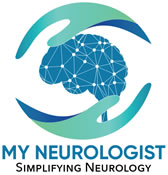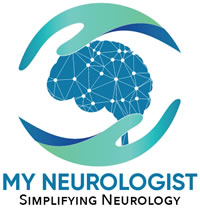What is dystonia?
Dystonia is a type of neurological disorder resulting in abnormal body posture or movements resulting from sustained involuntary muscle contraction.
Are there different types of dystonia?
Dystonia can be divided in types in many ways:
Based upon the areas involved:
- Focal dystonia: When one or a small group of muscles in one body region are involved. Examples are:
- Eyelids: Blepharospasm
- Face: Hemifacial spasm
- Mouth or tongue: Oromandibular
- Larynx: Spasmodic dysphonia
- Neck: Cervical dystonia
- Hand: Writer’s cramps
- Foot or leg
- Trunk
- Segmental dystonia: When more than one body regions are involved. Examples are:
- Meige syndrome: Eyes and lower face dystonia
- Trunk and limb
- Multi-segmental dystonia: When multiple unrelated body segments are involved. For example, Writer’s cramps and cervical dystonia
- Generalized dystonia: When trunk is involved with other body segments.
- Combined dystonia: It implies that dystonia is associated with or a part of other conditions such as:
- Parkinsonism
- Myoclonus
- Chorea
- Wilson disease
- Hypermagnesemia
- Aceruloplasminemia
- Woodhouse-Sakati syndrome
- Lysosomal storage disease
- Disorders of purine metabolism
- Mitochondrial disorders
- Organic acidurias
- Aminoacidurias
- Disorders of biotin metabolism
- Neurodegenerative disorders
- Primary coenzyme Q10 deficiency
Based upon triggers:
- Action dystonia: Triggered by writing, typing, walking, or certain activities or postures.
- Circadian dystonia: Upon waking up or while going to sleep.
- Paroxysmal dystonia: Intermittent attacks of dystonia with no obvious trigger. It usually affects children, rarely after teen years.
Based upon etiology:
- Primary or genetic
- Autosomal dominant
- Autosomal recessive
- Genetic combined
- Secondary or acquired
- Unknown cause or idiopathic
What are secondary or acquired causes of dystonia?
- Hypoxic brain injury
- Hypoglycemic brain injury
- Infectious, such as prion disease
- Para-infectious, such as Reye syndrome
- Toxic, such as kernicterus, CO poisoning, wasp sting, methanol, cyanide, disulfiram, manganese (from ephedrone, chronic liver disease, total parental nutrition)
- Autoimmune, such as multiple sclerosis or anti-phospholipid antibody syndrome
- Paraneoplastic conditions
- Osmotic demyelinating syndrome
- Vascular disorders
- Traumatic brain injury
- Space occupying brain lesion
- Electrocution
- Drugs, such as anti-psychotics or anti-epileptics
How is dystonia diagnosed?
It is diagnosed based upon history and examination. Nowadays, review of pictures and videos taken by the patient, or the family or friends can also help. Other than genetic testing that may be useful in some patients, there is no lab test available to confirm primary dystonia. There are many causes of secondary or acquired dystonia and the workup for that is tailored to an individual patient.
What is pseudo-dystonia?
May conditions can mimic dystonia. Some examples are:
- Ptosis
- Myotonia
- Functional or psychogenic dystonia
- Tetanus
- Klippel Feil syndrome
- Neck mass
- Dupuytren contracture
- Trigger finger
- Carpopedal spasms
How is dystonia treated?
Before treatment is considered, it is important to make the exact diagnosis to see if it is of primary or the secondary type. For secondary dystonia, treatment is cause specific. Following measures are available for primary dystonia, which may not be effective in all cases:
-
- Physical and/or occupational therapy
- Some anti-epileptics like carbamazepine
- Anti-cholinergic drugs
- Benzodiazepines
- Botulinum toxin injections
- Deep brain stimulation
- Amantadine
- Ketogenic diet
- Avoidance of triggers
- Avoidance of fasting, stress, anxiety
- Trans-magnetic stimulation
- Brain surgery
Some patients with specific type of dystonia may also benefit from:
a. Tardive dyskinesia
Anti-dyskinetic meds (valbenazine, deutetrabenazine, and tetrabenazine)
b. Dopamine responsive dyskinesia
Dopamine or levodopa
Anticholinergics
c. Paroxysmal kinesogenic dyskinesia
Carbamazepine, or other antiepileptics
d. Paroxysmal non-kinesogenic dyskinesia
Benzodiazepine, gabapentin, levetiracetam
e. Paroxysmal exercise induced dyskinesia
Ketogenic diet
Triheptanoin
f. Tardive akithesia
Zolpidem
For combined dystonia
a. Myoclonus and dystonia
Zonisamide
Benzodiazepines
b. Parkinsonism and dystonia
Levodopa
Dopamine agonists
Anticholinergics
c. Spasticity and dystonia
Baclofen
Where can I get more information about dystonia?
The International Parkinson and Movement Disorder Society


Leave a Reply
Your email is safe with us.
You must be logged in to post a comment.